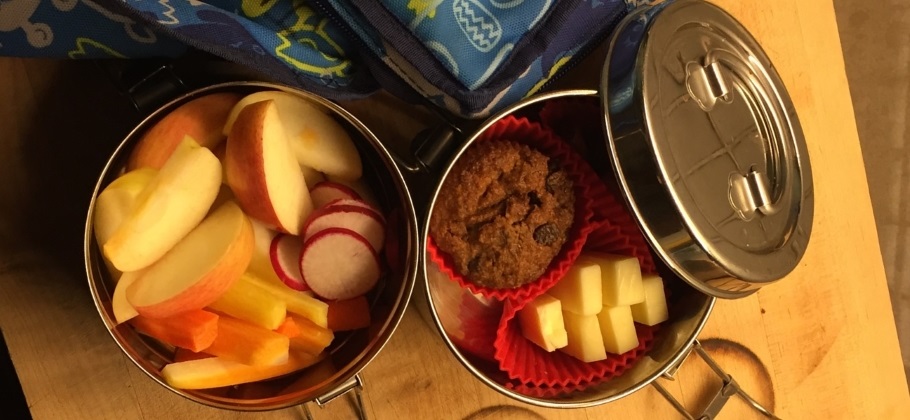The kitchen is often the primary working room in our homes. It also has the potential to create a lot of waste as foods and products flow in and out. Practice reuse in the kitchen by simplifying your kitchen tools, reducing your consumption of single-use items, and getting creative about repurposing containers and food scraps.
Skip the specialty gadget
It makes sense to want things that make your life easier, but many specialty kitchen items like bread machines, yogurt makers, egg slicers, and herb choppers bought with good intentions spend their lives collecting dust and creating clutter. They also used up valuable resources to manufacture and get to your home.
To reduce your impact, resist the urge to buy this year’s “must-have” kitchen supplies. Borrow items you won’t use often (specialty pans, cake molds, juicers, or other single-use appliances) from friends, family and neighbors. Or, tap into your broader community through Buy Nothing groups, NextDoor, or lending libraries such as the Twin Cities Library of Things. If you already filled up your cupboards, use these same methods to loan these items out, sell, or give them away.

Reduce your use of single-use items
Another way to practice more reuse in the kitchen is to reduce or eliminate things you only use once before throwing away.
- For food packaging, this starts at the grocery store. Reduce your packaging by skipping individual-sized snack packs, refilling your containers with loose bulk foods and using reusable produce bags and grocery bags.
- For wipes, spills and cleaning, quit paper towels and paper napkins and use reusable, washable cloths instead. There is no need to buy something new—this could be as simple as cutting up an old t-shirt or an old towel. If you know sewing basics, you can make nice napkins out of any secondhand fabric that you like.
- Go with vintage methods for food storage and cooking. Skip the plastic wrap, baggies and aluminum foil by using air-tight containers you already have, or simply turning over a plate or pan to make a cover. Use wide bowls for marinades, pans or cast iron for grilling, and reusable silicon mats or liners for baking. Have friends or family return the containers you sent home with their leftovers or repackage leftovers in clean black plastic takeout containers you can’t recycle anyway.

Repurpose containers
Practice reuse and secondhand shopping for your kitchen needs. Embrace reuse by repurposing jars and containers you bought other foods in for food storage: refill spices, store pantry staples or stash your leftovers in any of the glass jars your sauces and jellies came in. Save yourself time and skip the popular “re-stock with me” aesthetics where everything has a specialty bin or box to organize it. If this ritual brings you joy, first check the thrift store; it is likely packed with kitchen things and other boxes, bins and containers that could be used instead.

Stretch your idea of what is worth saving
Practice creativity with how you use up odds and ends to cut down on waste. Ask yourself if there’s a way to use that last bit of food before you toss it. Pickle juice or olive brine can be mixed with other ingredients to make tasty salad dressings, dips or marinades, fruit rinds can be candied or pickled, and chips, cracker, cereal or cookie crumbs can be added into breading or used to top yogurt or ice cream as it suits your taste. You can even stretch your waste liquids - use a basin or big bowl to catch water used for rinsing fruits and veggies and water your potted plants or your garden. Add cooled cooking water, leftover juice or coffee (the things that might smell or spoil) to your backyard compost bin for moisture.
When it comes to practicing reuse in the kitchen, avoid specialty gadgets and appliances, cut down on the single-use items you bring in, and get creative about reusing what you already have! Small changes to our everyday habits can save you money and reduce waste.

